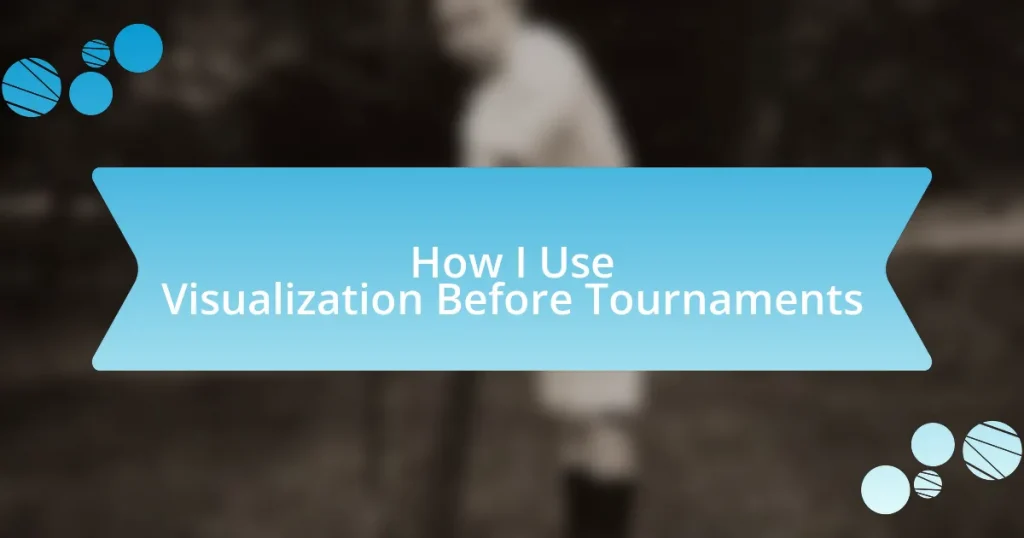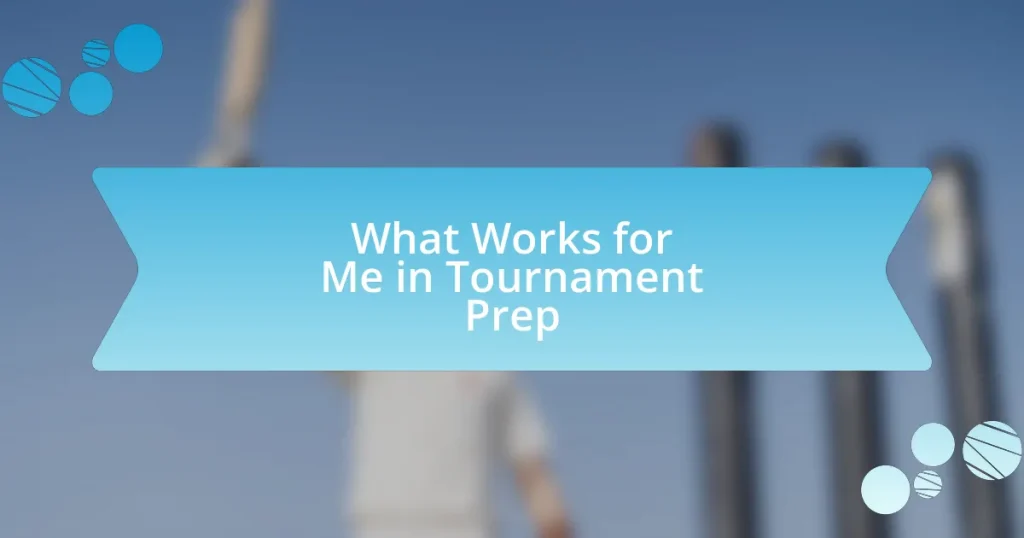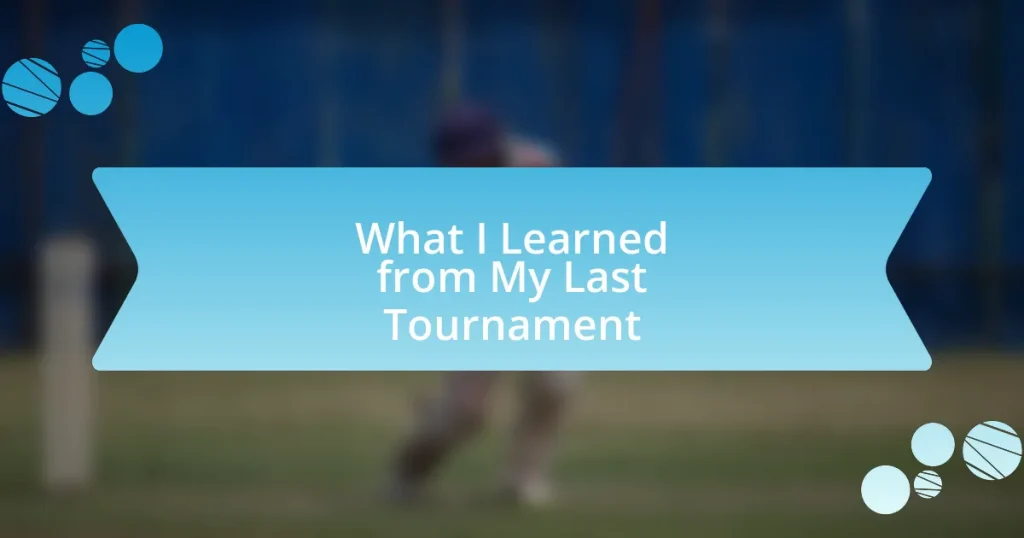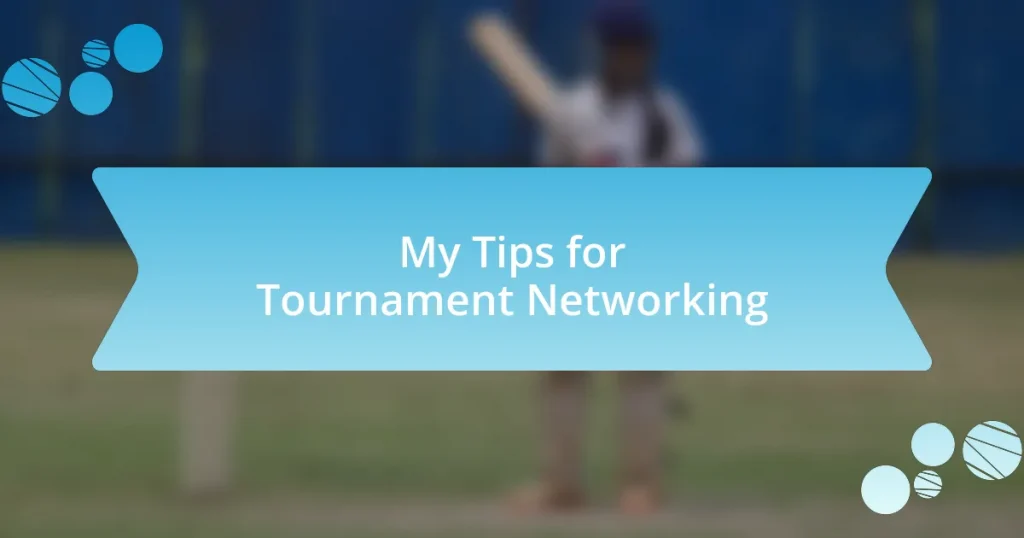Key takeaways:
- Visualization techniques enhance athletic performance by improving mental clarity, reducing anxiety, and boosting motivation.
- Setting specific, achievable visualization goals helps athletes mentally prepare and focus on key performance elements.
- Adapting visualization practices to suit different tournament conditions equips athletes to handle unexpected challenges more effectively.
- Regularly evaluating the effectiveness of visualization allows athletes to adjust their mental strategies based on actual performance outcomes.
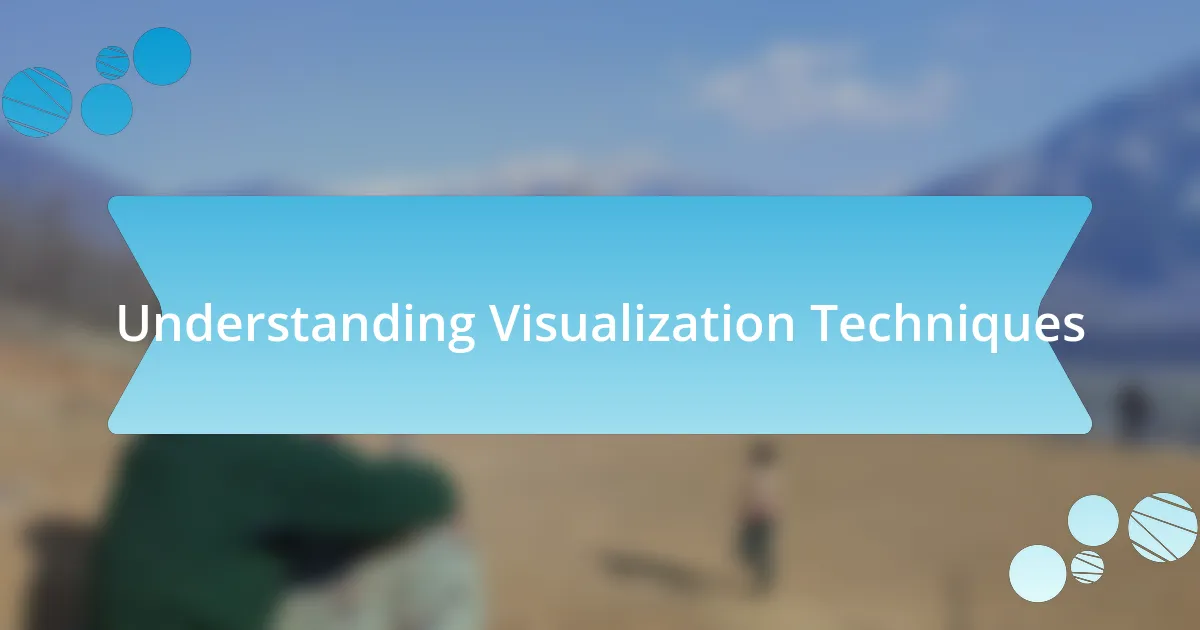
Understanding Visualization Techniques
Visualization techniques are powerful tools that allow athletes to create vivid mental images of their performance. I remember one particular tournament where I imagined each stroke and movement before executing it, which made my body feel more prepared and confident. It’s fascinating how our mind can set the stage for our physical actions—have you ever experienced that rush of adrenaline just from picturing a successful moment?
Another approach I’ve found helpful is breaking down complex skills into smaller, manageable visualizations. For instance, picturing myself overcoming a challenge in slow motion made it easier to grasp each detail, allowing me to tackle it effectively during my match. Isn’t it remarkable how layering these mental images can enhance our actual performance? It feels like creating a roadmap that guides me toward success.
I often utilize visualization in combination with breathing exercises to ground myself emotionally. By visualizing a calm and composed version of myself, I can transform any pre-tournament anxiety into focused energy. This technique makes me wonder—how many athletes truly understand the emotional impact of connecting visualization with their mindset? This synergy has been crucial for me in maintaining clarity and composure under pressure.
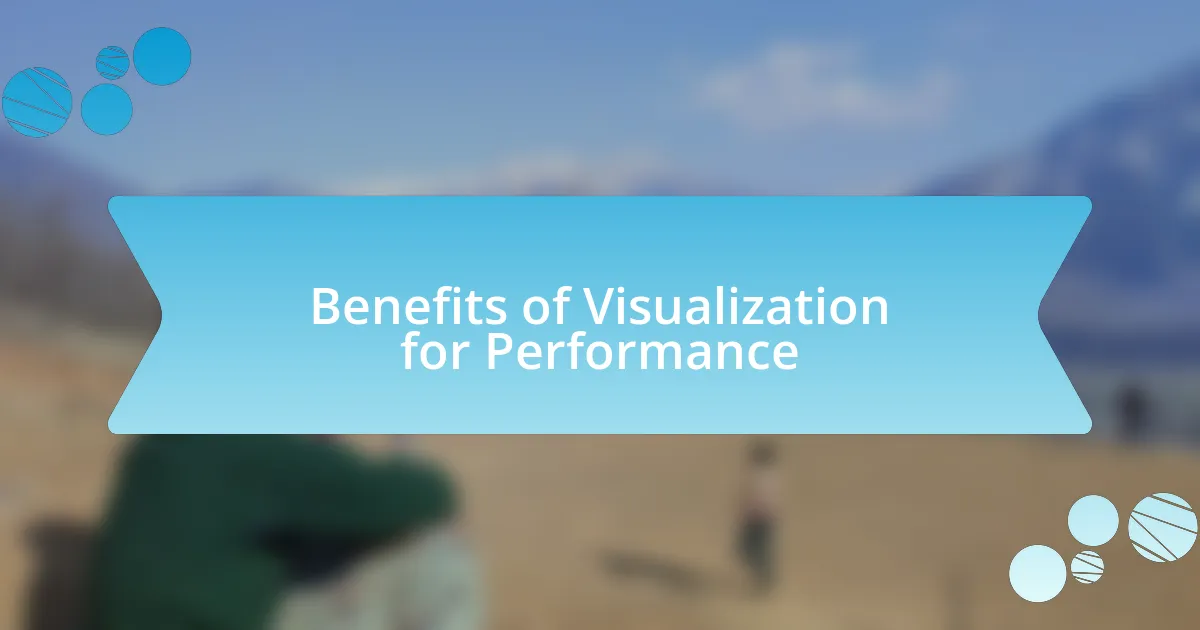
Benefits of Visualization for Performance
Visualization significantly enhances performance by fostering mental clarity and reducing anxiety. I’ve noticed that when I take the time to visualize my performance, my nerves settle, and I feel far more in control. I vividly remember a critical moment in a tournament where I had envisioned myself executing a flawless routine, and when the time came, the familiarity of the scene in my mind brought me the confidence to perform at my best.
Here are some key benefits I’ve experienced from visualization:
- Improved focus on specific skills, leading to better execution during competition.
- Decreased anxiety levels, enabling a more relaxed state of mind before matches.
- Enhanced motivation, as visualizing success fuels my desire to achieve it.
- A clearer mental strategy, allowing me to anticipate challenges and prepare effectively.
- Increased resilience, helping me bounce back from setbacks by envisioning future successes.
Each of these benefits contributes to a more prepared and confident approach, making visualization an indispensable part of my pre-tournament routine.
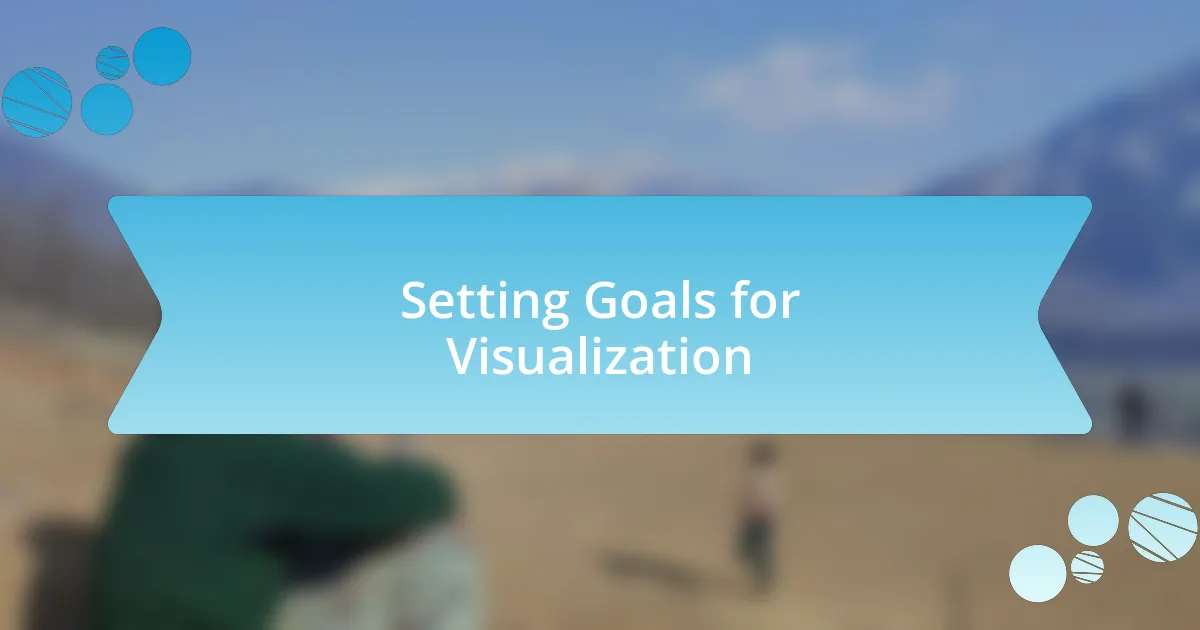
Setting Goals for Visualization
Setting effective goals for visualization is foundational for maximizing its benefits during tournaments. I often find that setting clear, achievable goals gives my visualization sessions purpose. For instance, rather than simply visualizing a successful outcome, I focus on specific components of my performance, such as technique and timing, which helps me mentally prepare for each segment of my routine.
When I first began using visualization, I struggled with broad goals that lacked direction. Through experience, I’ve learned that breaking down my goals into smaller, manageable tasks not only establishes a clearer path but also helps me celebrate small victories along the way. For example, before a recent competition, I centered my visualization on perfecting my footwork, which resulted in improved agility and confidence during the actual event.
Moreover, I believe that incorporating emotions into my visualization is powerful. I vividly imagine the excitement I feel when I execute a well-practiced move flawlessly or the tranquility that washes over me during moments of calm before performing. This emotional connection makes the visualization more realistic and impactful, reinforcing my readiness for competition.
| Goal Type | Example |
|---|---|
| Performance Focus | Visualizing perfecting footwork during my routine. |
| Outcome Focus | Imagining the thrill of winning a close match. |
| Emotional Focus | Feeling the excitement of executing a move effortlessly. |
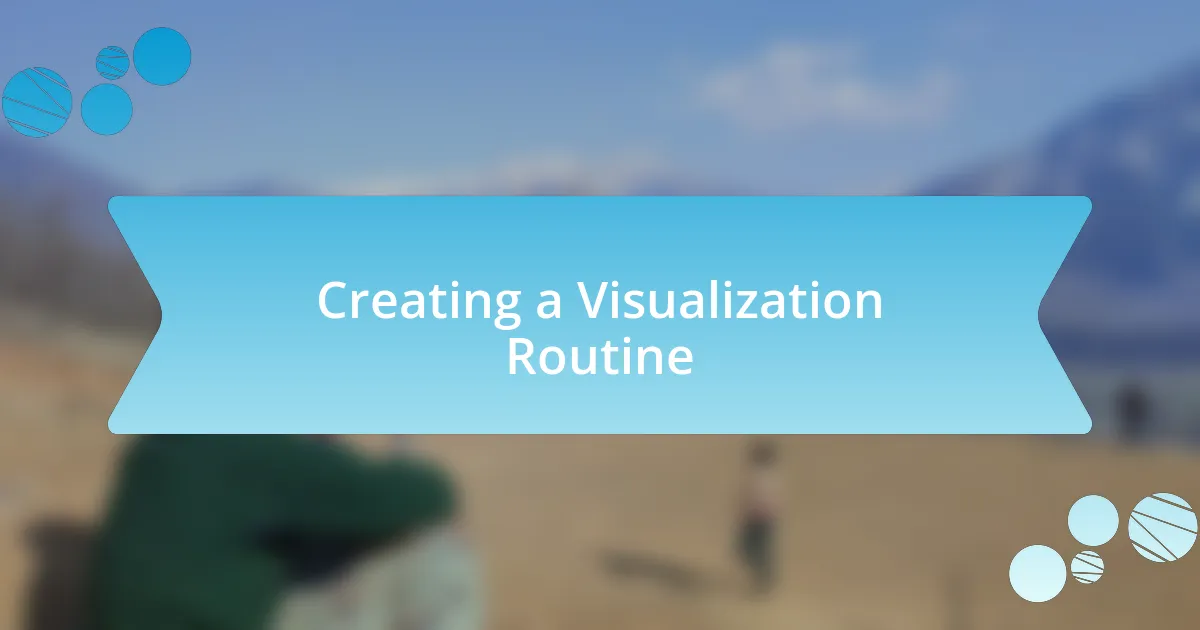
Creating a Visualization Routine
Creating a consistent visualization routine has been a game-changer for me. Every time I prepare for a tournament, I dedicate a specific time each day to visualize different scenarios I might encounter. I ask myself, “What do I want to reinforce today?” By focusing on various aspects of my performance, like my entry strategy or how to handle unexpected challenges, I reinforce my muscle memory and mental readiness.
I also find that the environment in which I visualize plays a crucial role. When I look back on my journey, I remember how I transformed a quiet nook in my home into a visualization sanctuary. This space, free from distractions, became my go-to spot for immersing myself in my imagination. Isn’t it fascinating how the right setting can amplify our creativity? I believe the calmer and more inviting the space, the deeper I can dive into the mental images that prepare me for competition.
To truly cement the benefits of my routine, I use a blend of techniques, such as guided imagery and meditation. There were times when I felt overwhelmed with anxiety before an event. By integrating calming visualization techniques, like imagining myself in a serene landscape, I found a much-needed sense of peace. My visualization journey has taught me the importance of emotional resilience, making every competition feel more like a friendly match than a desperate fight for success.
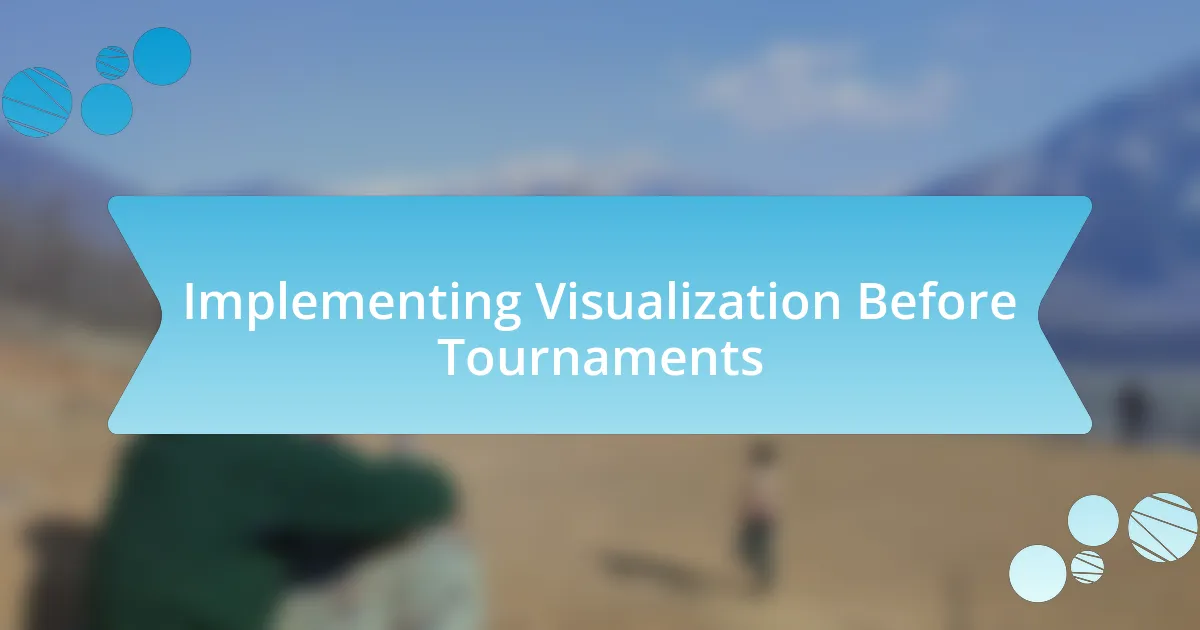
Implementing Visualization Before Tournaments
When it comes to implementing visualization before tournaments, I like to be really intentional about the images I create in my mind. For instance, just a few days before a big event, I usually take some quiet moments to envision myself stepping onto the stage, confidence radiating from me. I can almost feel the energy of the crowd and the flutter of nerves in my stomach. This prepares me to channel that adrenaline positively rather than let it overwhelm me.
I’ve also discovered that varying the specifics of my visualizations can produce different effects. Sometimes, I focus on the finer details of my technique, visualizing each movement as if I’m watching a slow-motion replay. Other times, I picture myself overcoming obstacles, like missteps or unexpected challenges. Isn’t it interesting how visualizing potential mishaps can actually equip us to handle them more smoothly? Through this, I’ve learned to embrace the unexpected instead of fearing it.
A powerful element of my visualization practice is reflecting on past tournaments. For example, after a particularly tough match where I didn’t perform as I’d hoped, I revisited that experience in my mind. In my next visualization session, I imagined myself making different decisions, feeling proud instead of defeated. This approach not only helps to build my confidence but also reinforces the idea that every experience, good or bad, can be transformed into a stepping stone for future success.
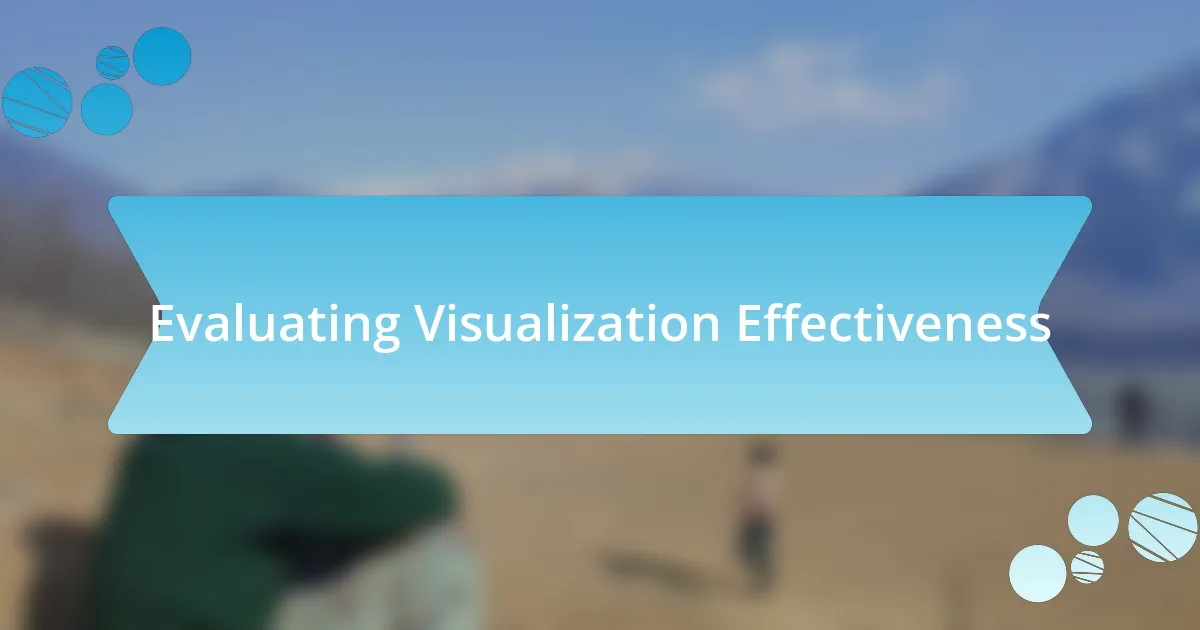
Evaluating Visualization Effectiveness
Evaluating the effectiveness of visualization is crucial for me. After each tournament, I reflect on how my mental imagery connected with my actual performance. I often ask myself, did my visualizations align with what happened in reality? When I notice discrepancies, it’s a cue for me to adjust my imagery in the next session.
I remember a time when I visualized a perfect routine but ended up stumbling during a critical moment. The disconnect was stark, and it hit me hard. I realized that I had neglected to visualize the nerves I felt right before my performance. Since then, I’ve incorporated those feelings into my mental practice, making my visualizations as realistic as possible. This adjustment has not only improved my performance but also built my resilience under pressure.
Tracking my progress over time is another key element in evaluating visualization. I keep a journal where I jot down my thoughts following each tournament. This has helped me identify patterns and highlights in my visualization journey. By correlating my feelings during visualizations with my tournament outcomes, I can better understand what works and what doesn’t. Isn’t it fascinating how a simple practice like journaling can enhance a complex mental strategy? It’s a reminder to be adaptive and thoughtful in my preparation.
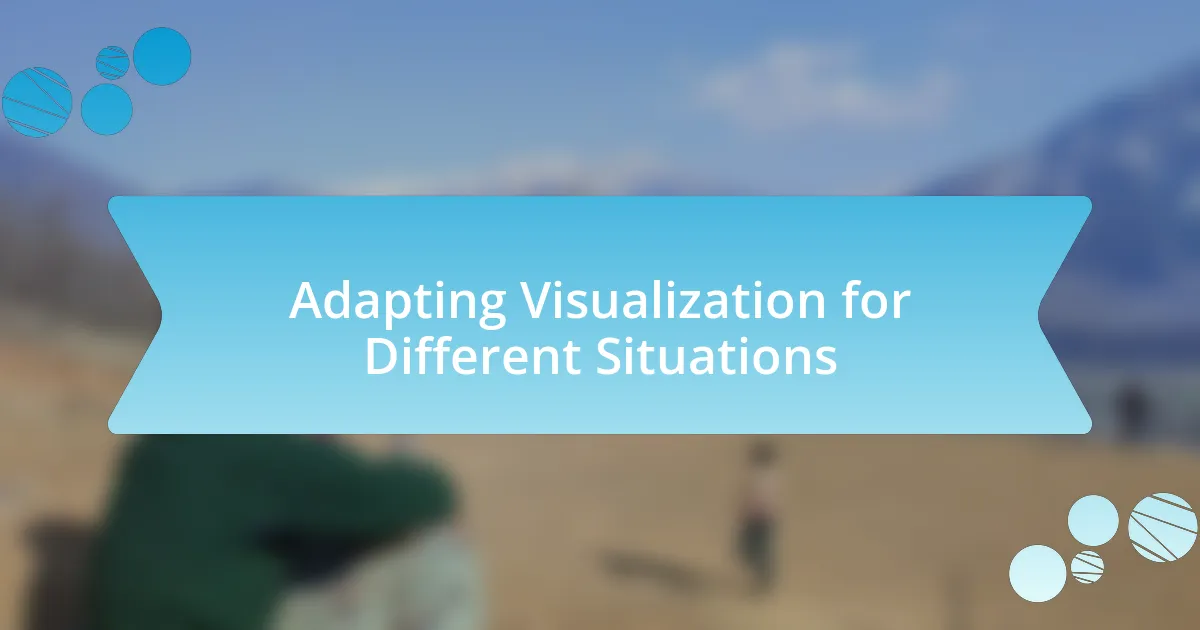
Adapting Visualization for Different Situations
When adapting visualization techniques for different situations, I find it essential to tailor my mental imagery to the specific challenges I might face. For example, before a high-stakes tournament, I visualize not just my ideal performance, but also potential obstacles like unexpected weather conditions or tough competition. This approach gets me mentally prepared for any scenario, helping me develop a sense of confidence in my ability to adapt on the fly.
In a recent tournament, I faced a uniquely challenging environment, with unpredictable wind conditions affecting my game. I realized my usual visualization didn’t account for these factors, so I spent extra time imagining how I would handle erratic gusts. As a result, when the wind picked up during my match, I remembered my mental rehearsal and felt much more composed. Isn’t it interesting how our minds can shape our reactions to reality if we allow them to prepare us for the unexpected?
Moreover, I’ve learned that relaxation-based visualizations are especially helpful during stressful moments, like right before a game starts. By envisioning myself in a calm state, I can counteract the adrenaline rush that often threatens to overwhelm me. It’s amazing how simply taking a moment to picture serenity can dramatically shift my focus and improve my performance. Have you ever noticed how a little mindfulness can pave the way for a successful outcome?










